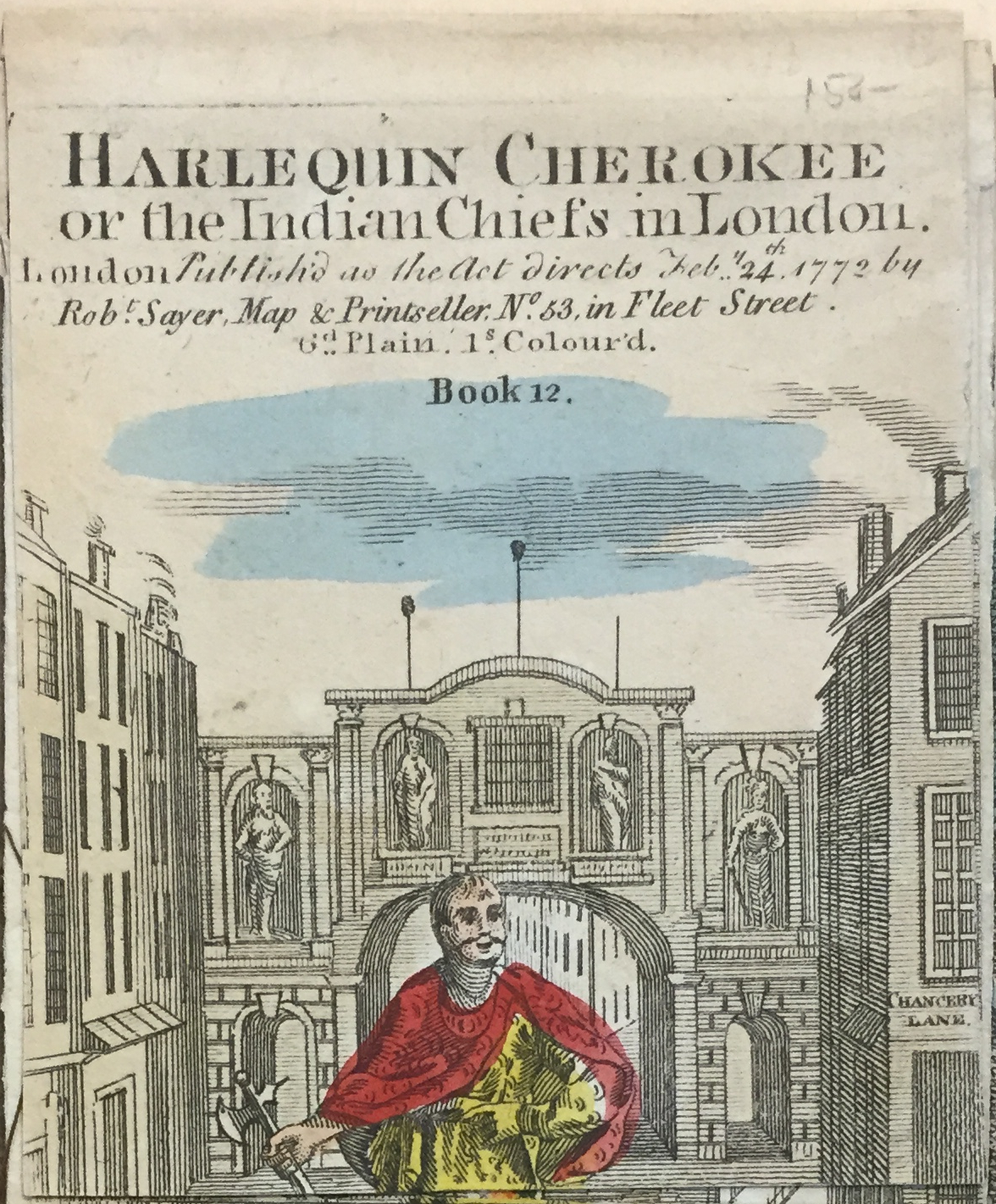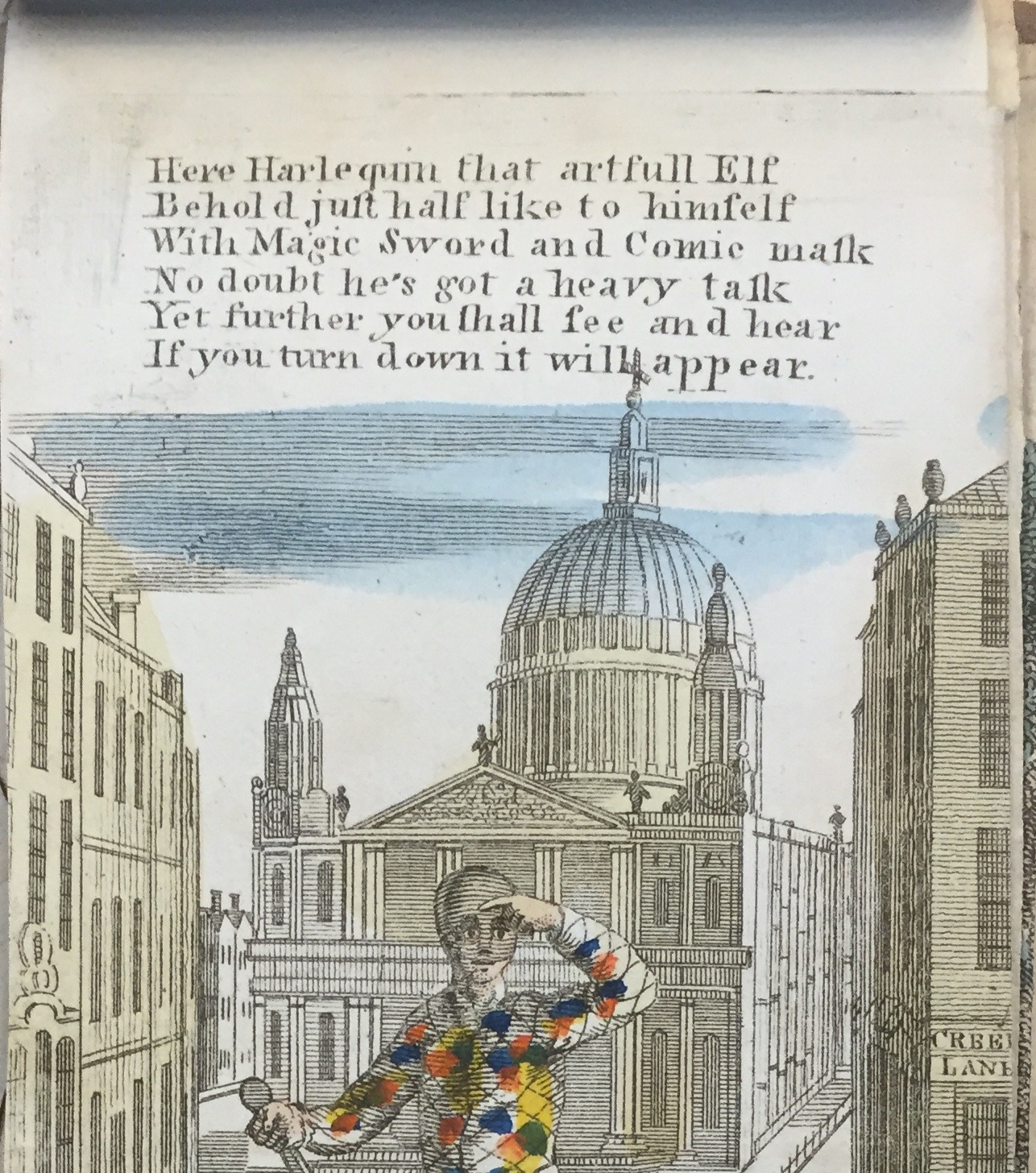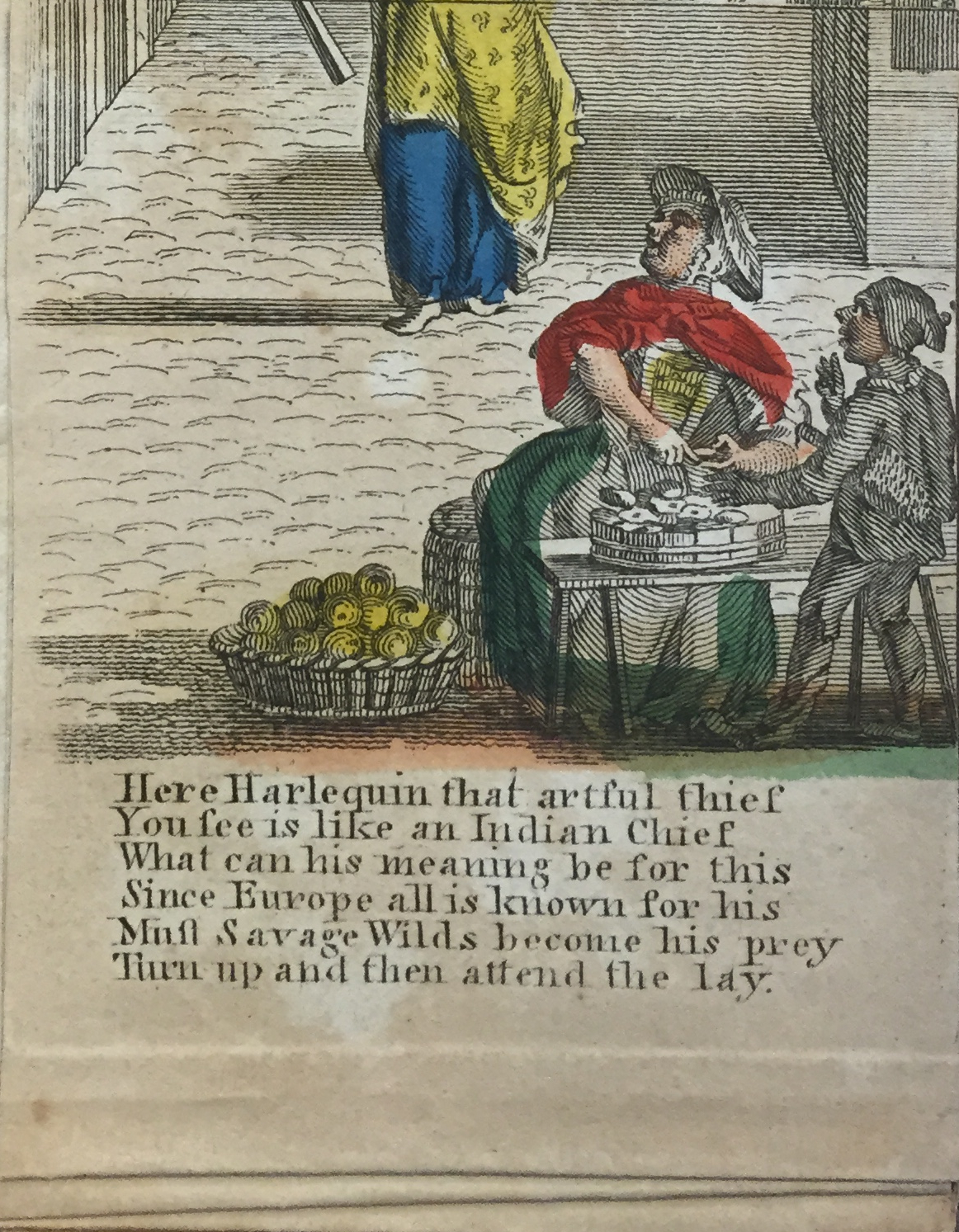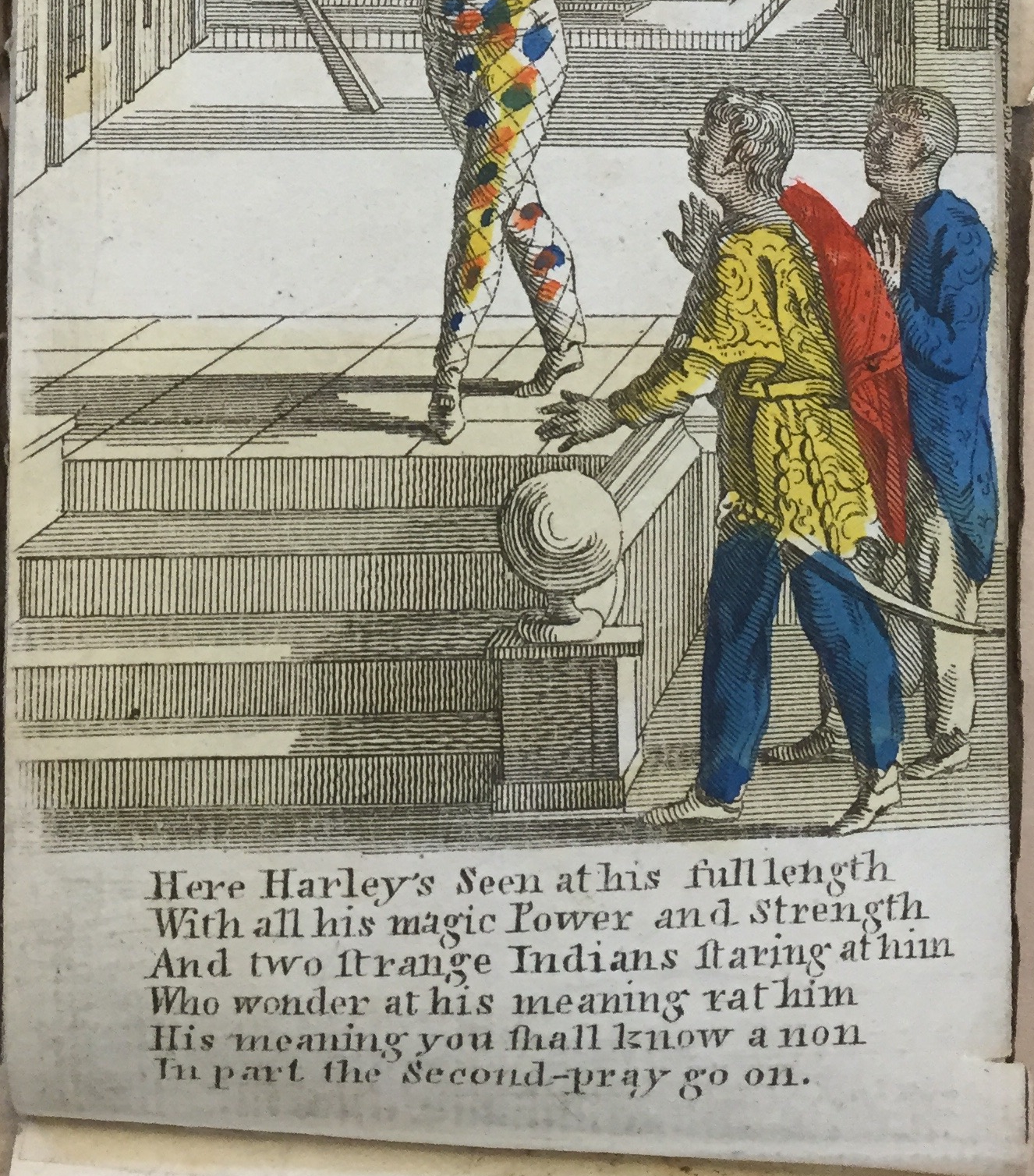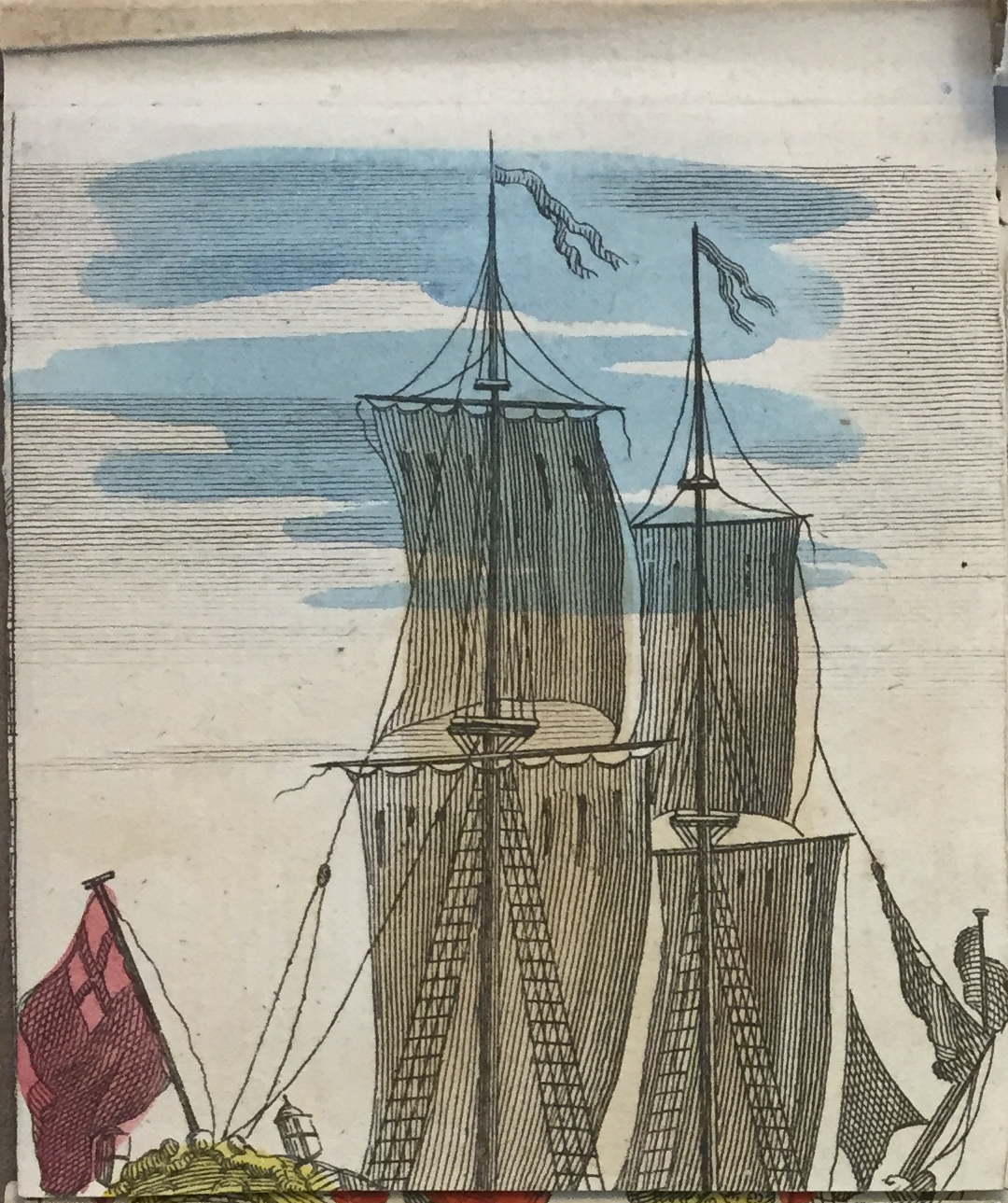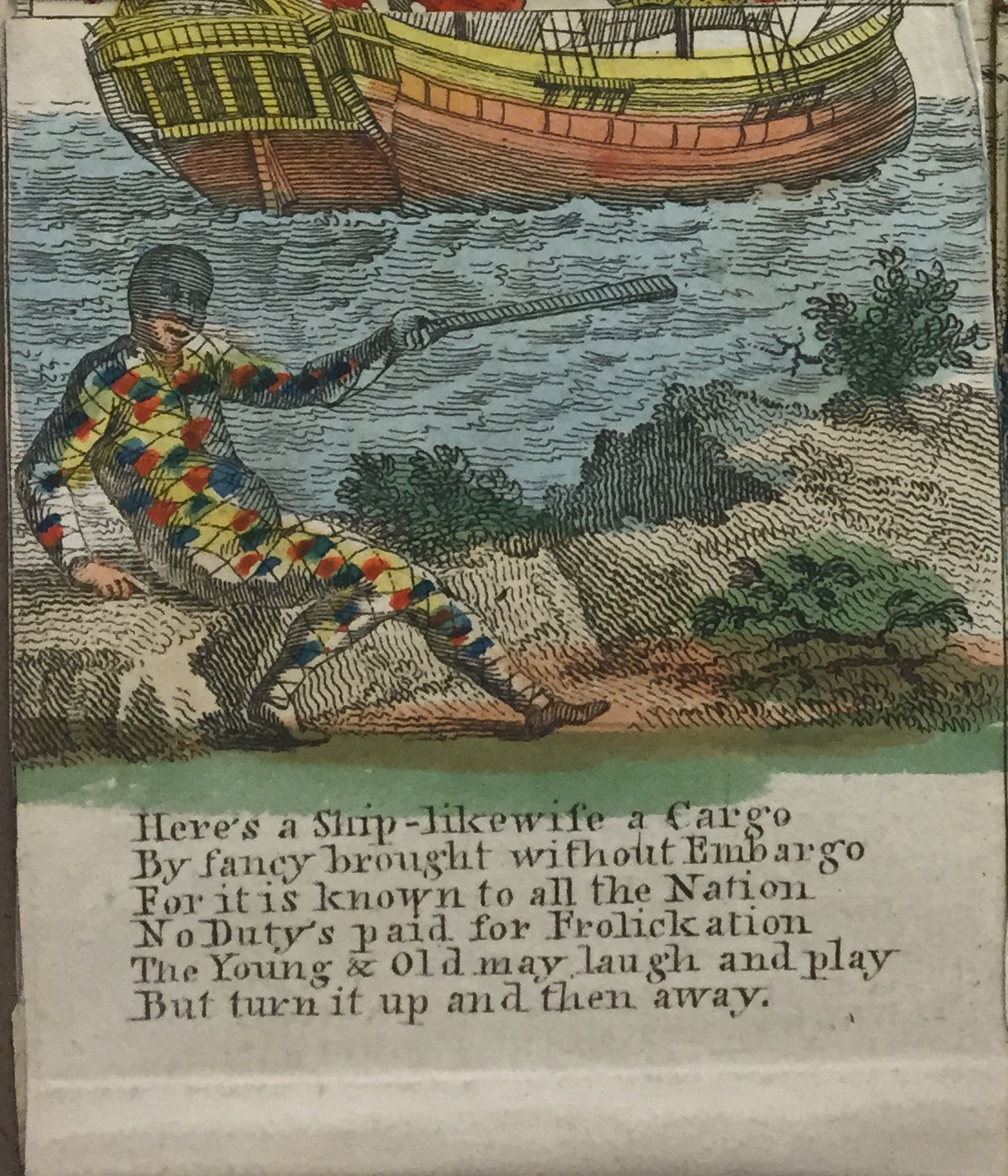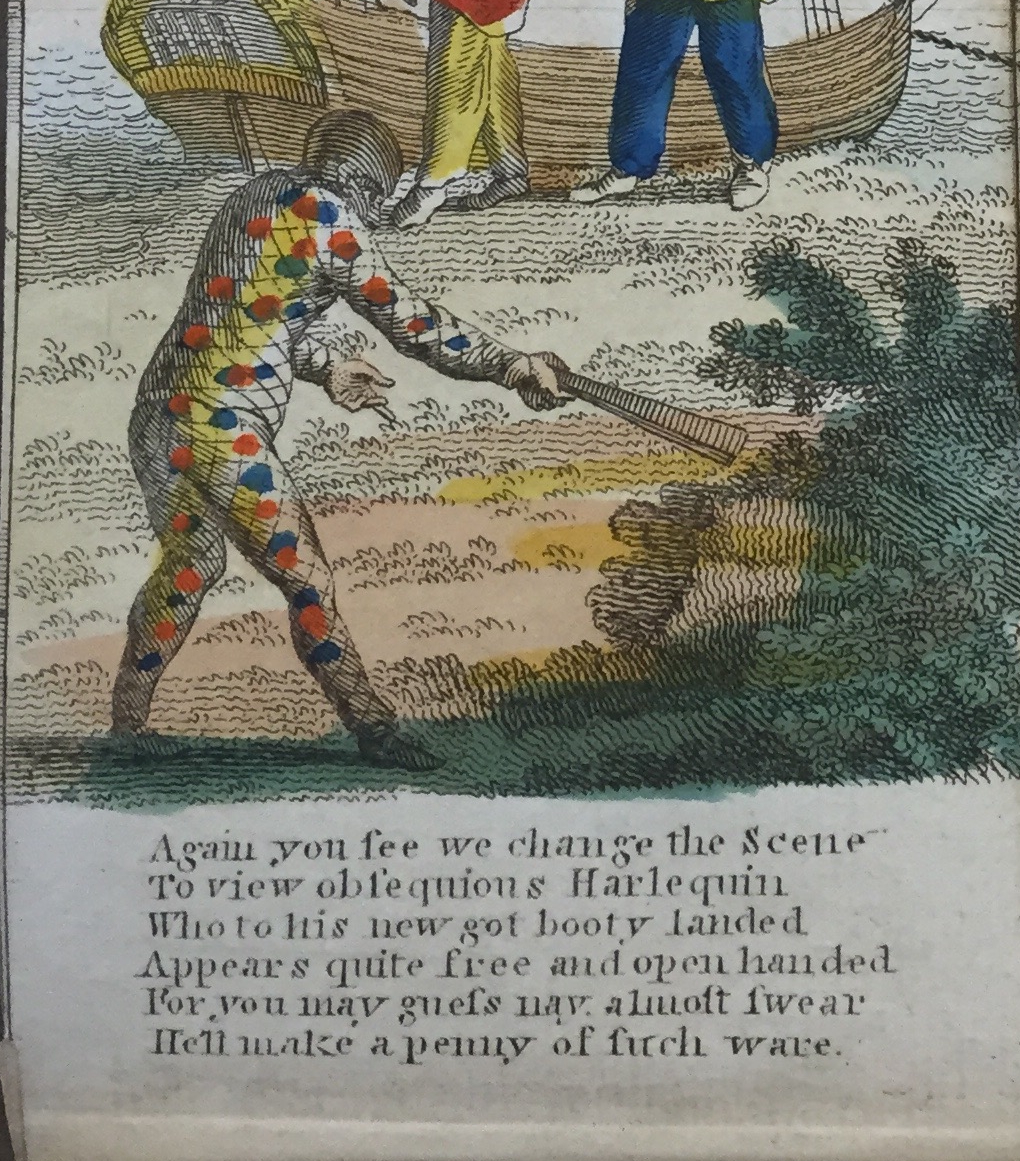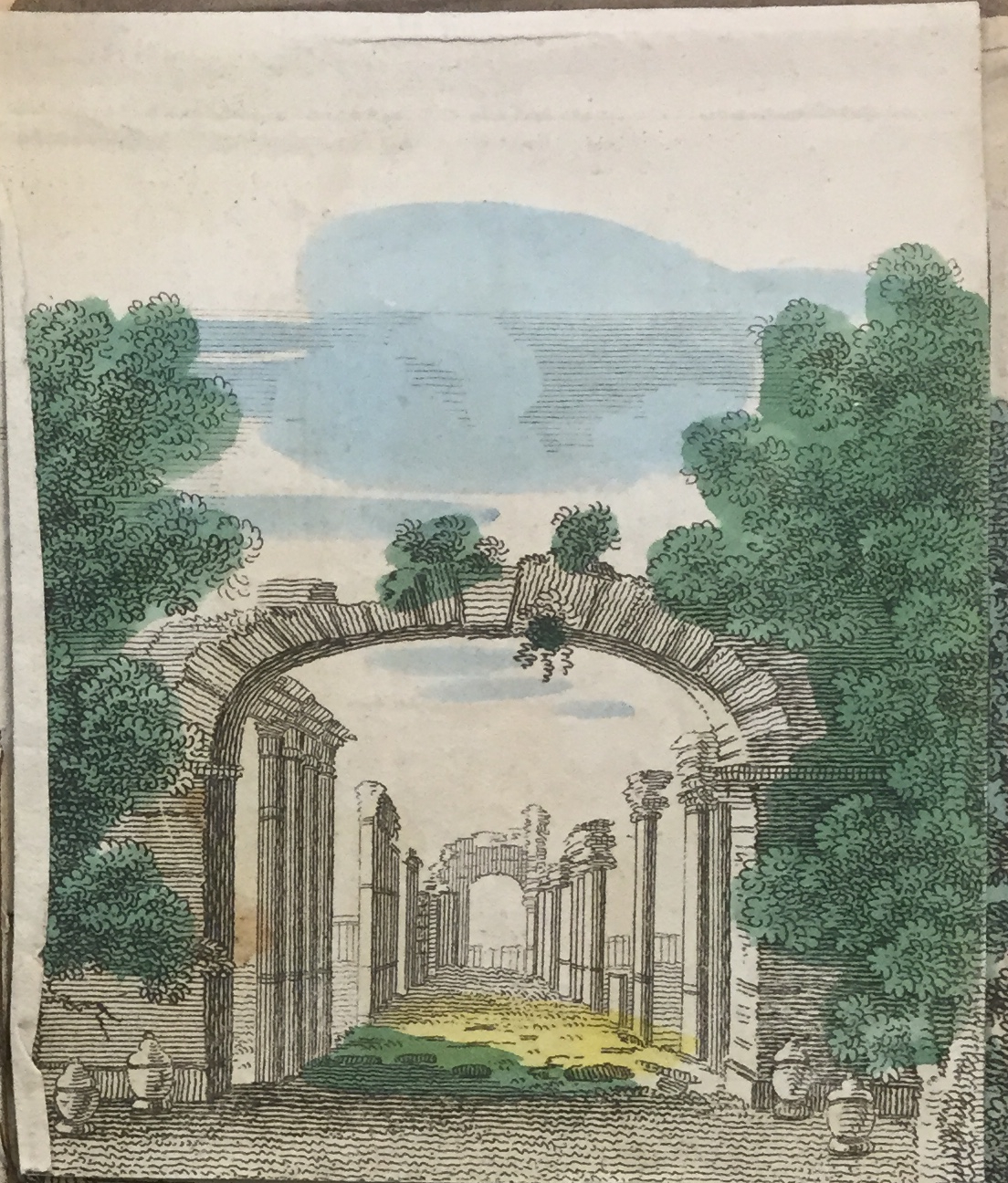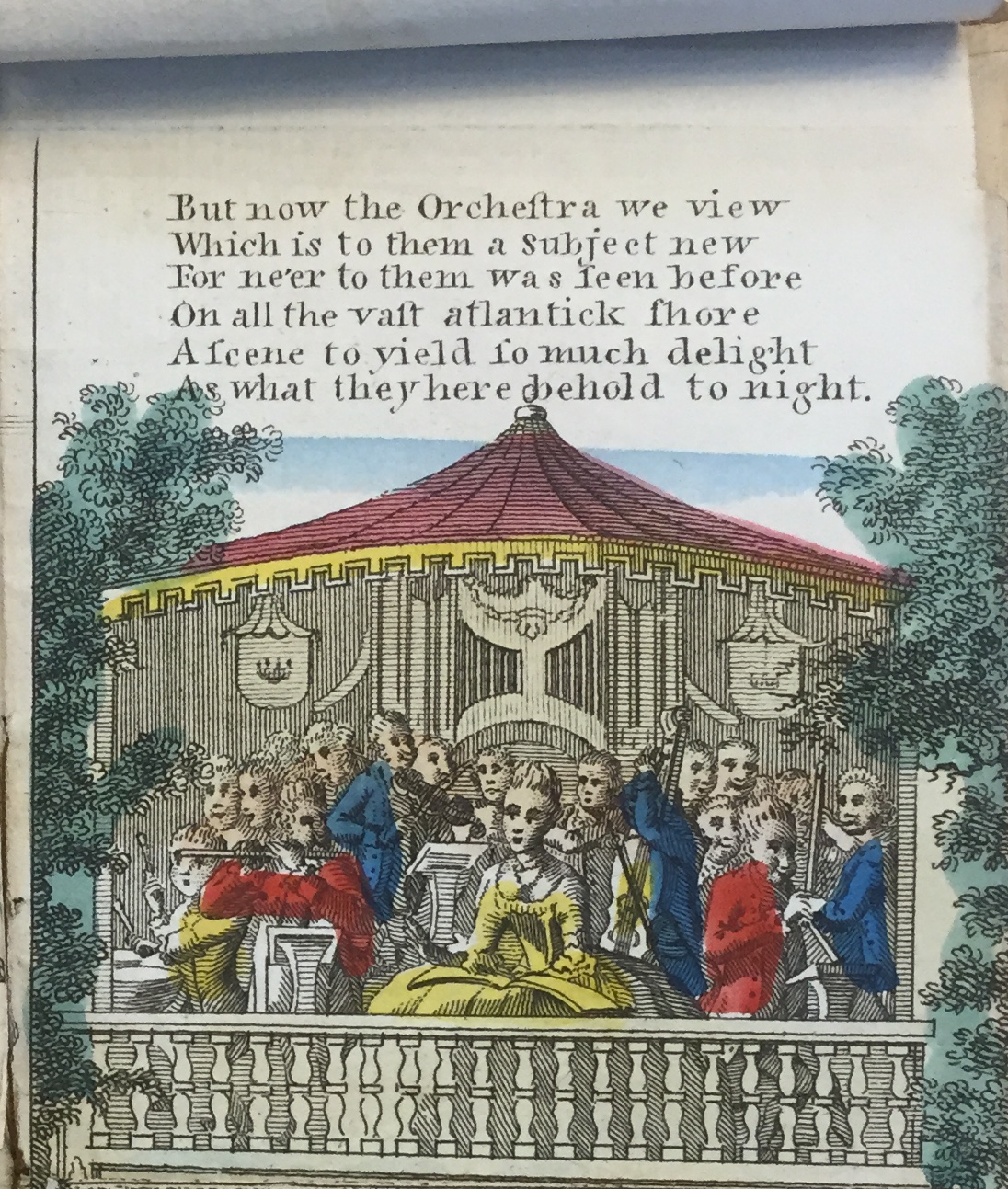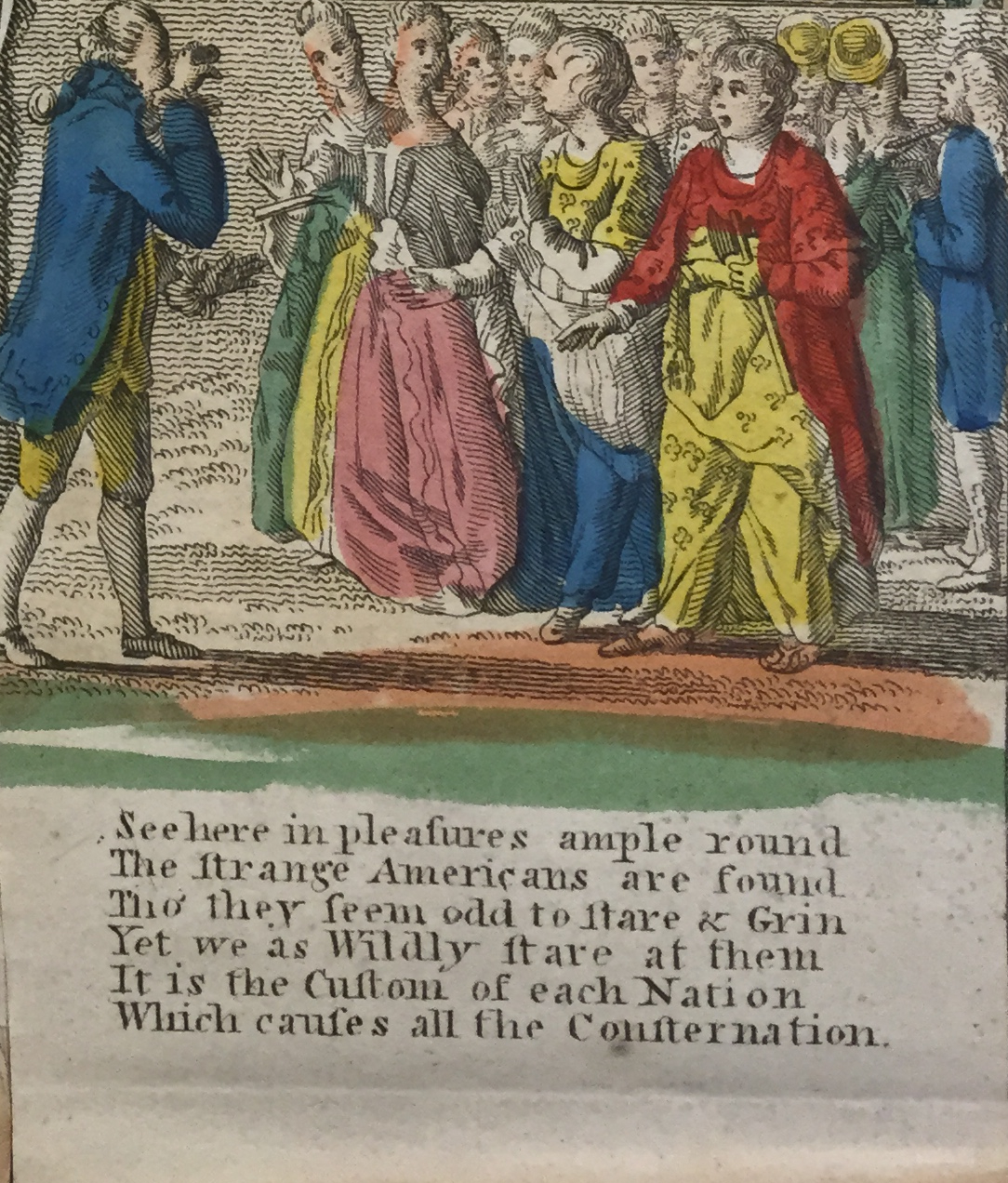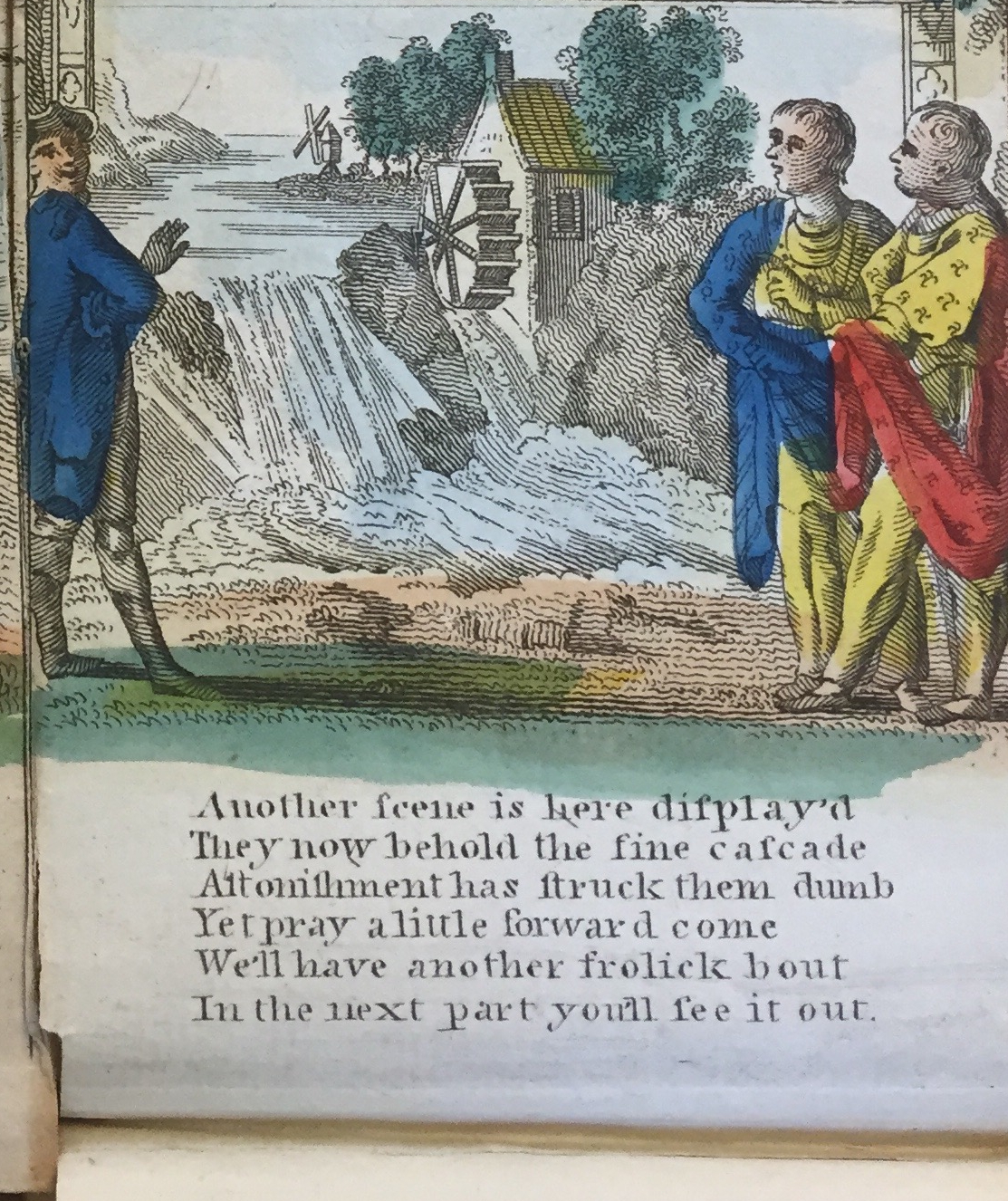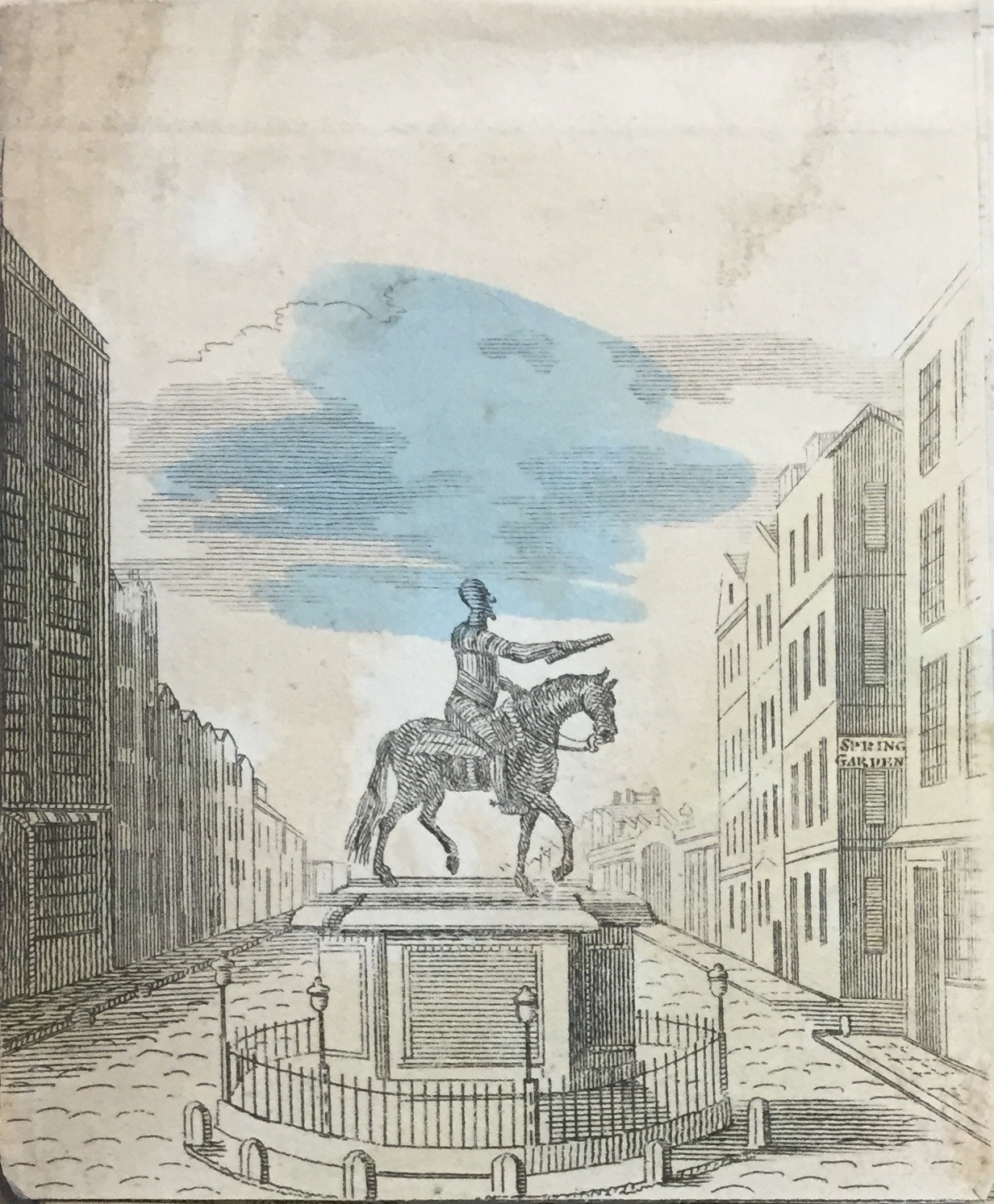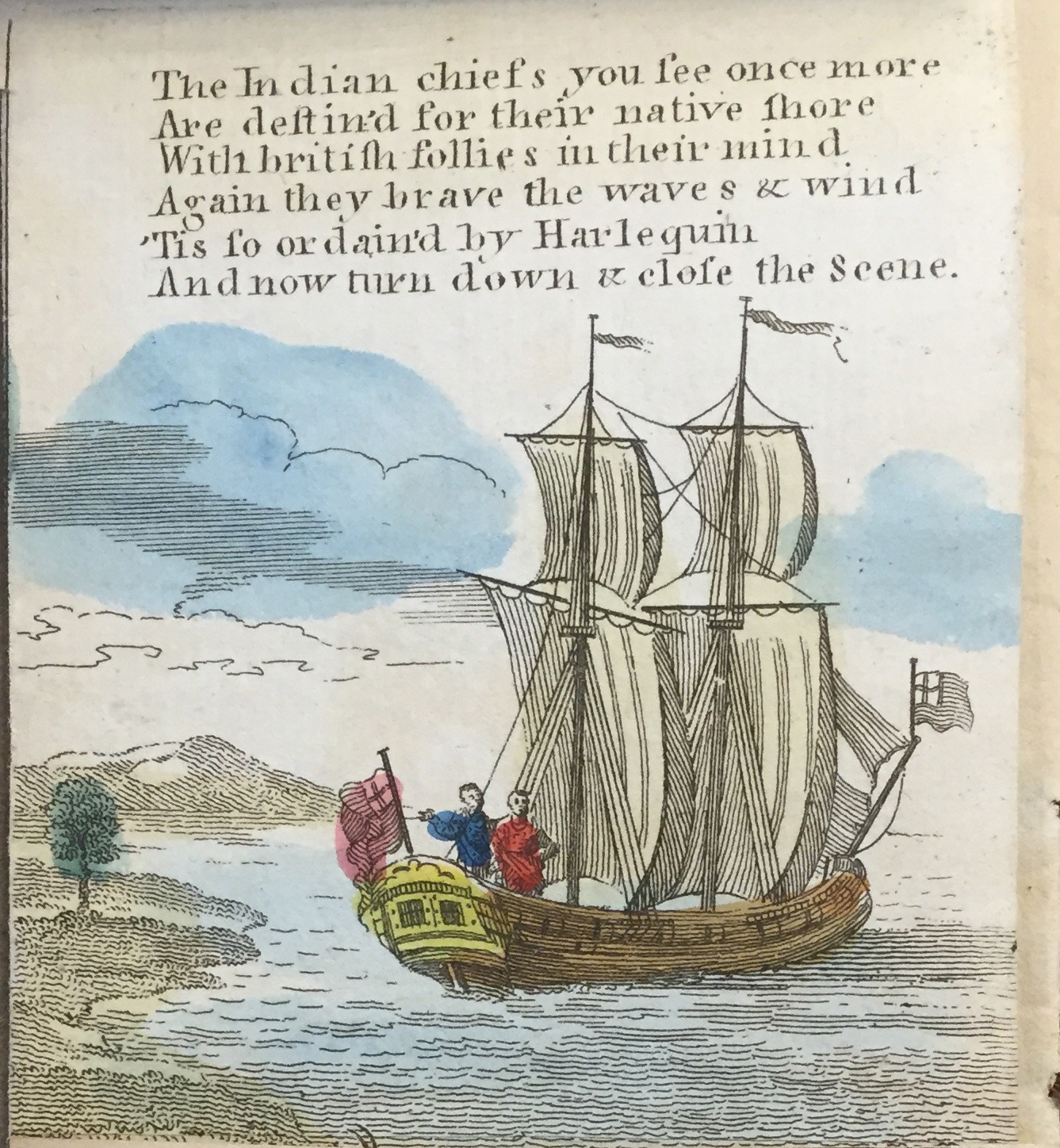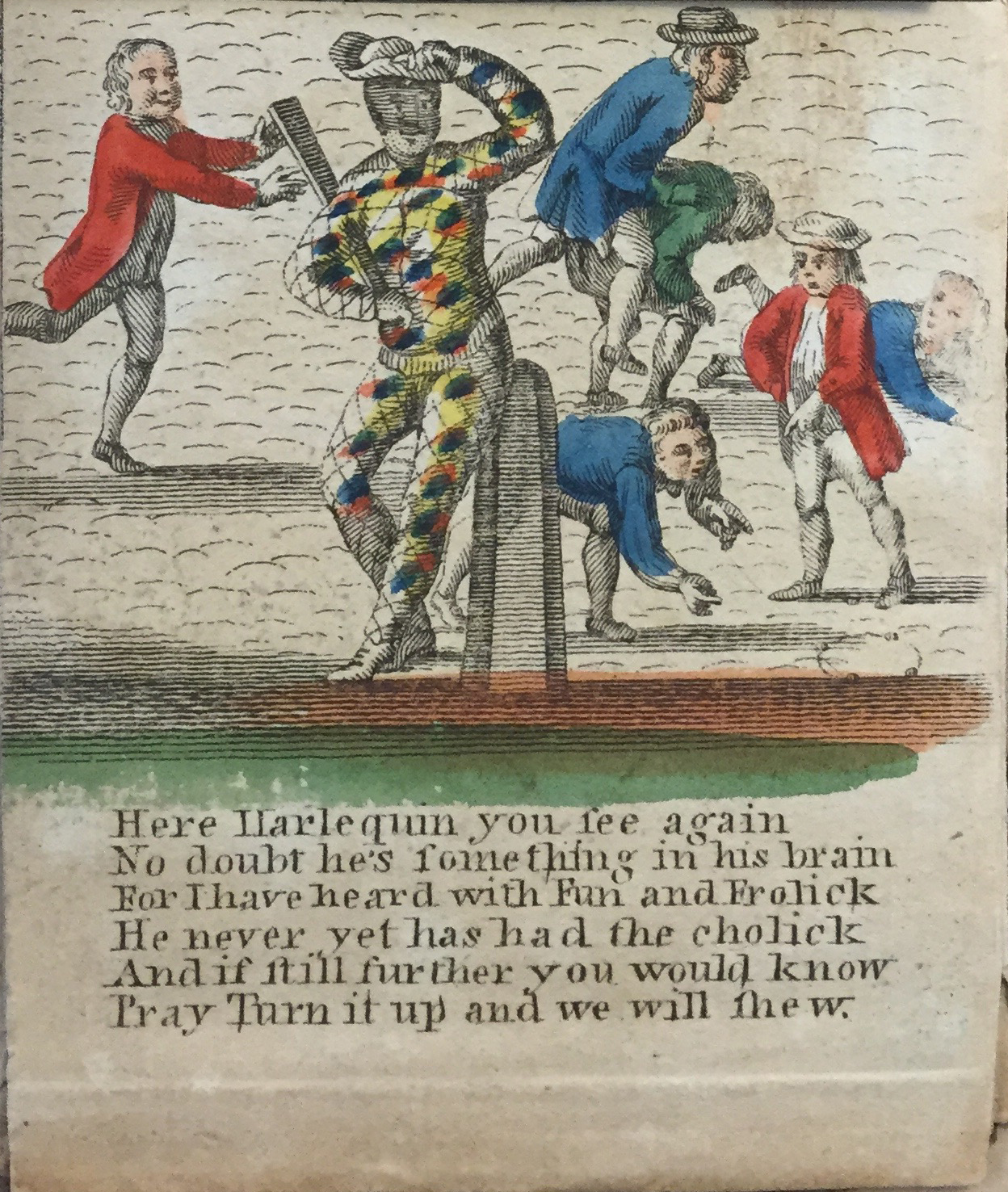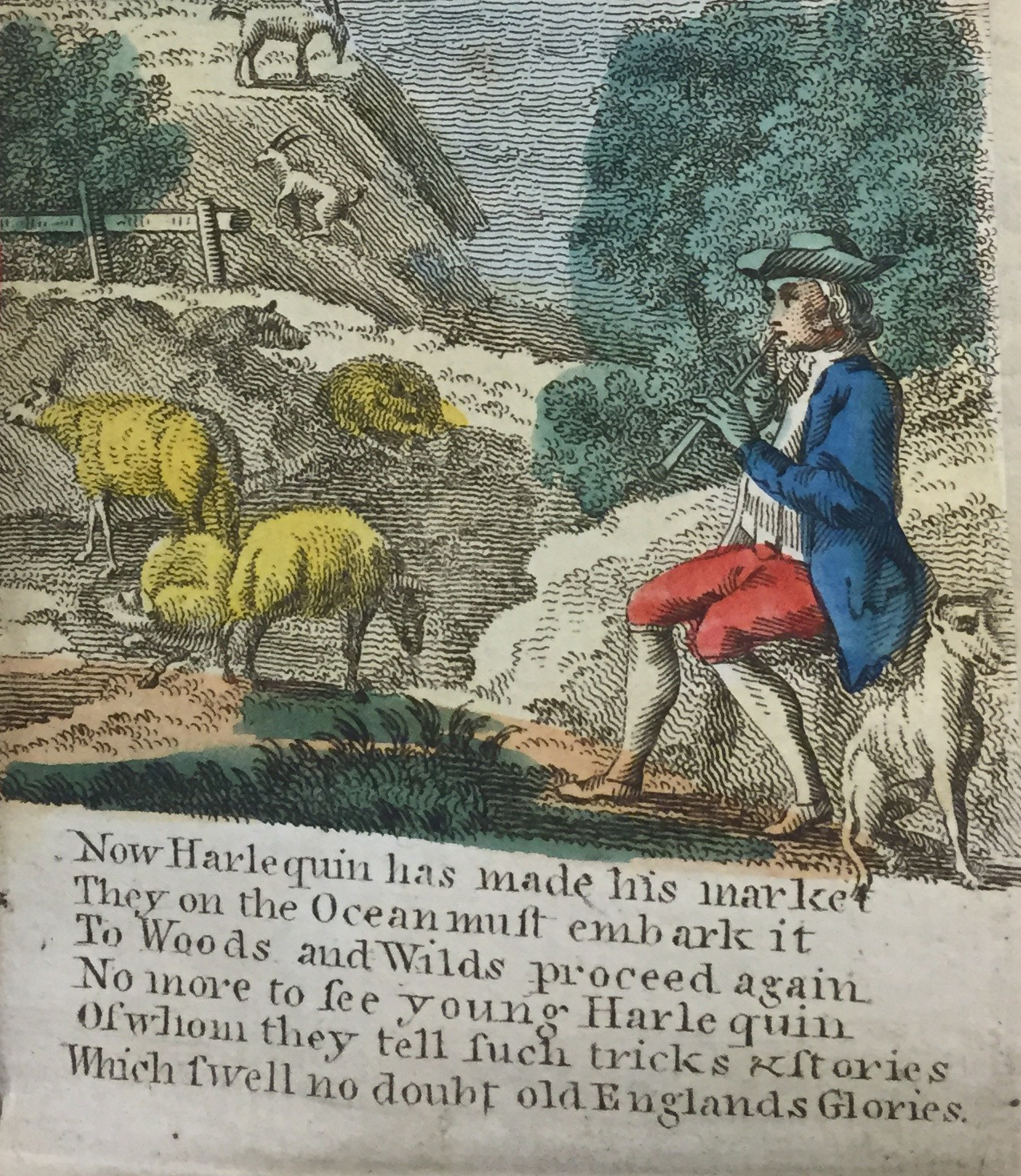Monica Anke Hahn, “Pantomime Indian: Performing the Encounter in Robert Sayer’s Harlequin Cherokee,” William and Mary Quarterly, 3d ser., 78, no. 1 (January 2021): 117–46.
Robert Sayer, Harlequin Cherokee or the Indian Chiefs in London, bk. 12 (London, 1772), Yale Collection of Western Americana, Beinecke Rare Book and Manuscript Library
Publisher and print seller Robert Sayer is widely credited with popularizing turn-up books in the 1770s. This example, Harlequin Cherokee, first published in 1772, was the twelfth in a series of turn-up books by Sayer based on popular pantomimes and slapstick comedies. It depicts the 1762 visit of a delegation of three Cherokees to London. Ostenaco, Cunne Shote, and Woyi toured the principal sites and monuments, participated in social activities, and had an audience with King George III. Turn-up books were made from two single landscape sheets, each printed with four vertically oriented scenes. One sheet was then glued over the other at the top and bottom edges. The top sheet was cut through horizontally at its center, and both sheets were folded on the vertical, accordion-style, into fourths, with the top sheet also cut on the vertical folds. This process created an object with four distinct views when the flaps of the top sheet were closed. The producers of the book intended the flaps to be lifted up in a particular order, giving the reader two additional views as the hidden images under the flaps were revealed. But, beyond those intended views, an additional view of each page could be revealed by lifting the bottom flaps while leaving the top ones down. The format’s complexity meant that surprising transformations, some unintended by the publishers, could take place in the scenes. This digital supplement allows readers to experiment with the book’s possibilities, both those envisioned by the publishers and those available to anyone who held the turn-up book in their hands.
